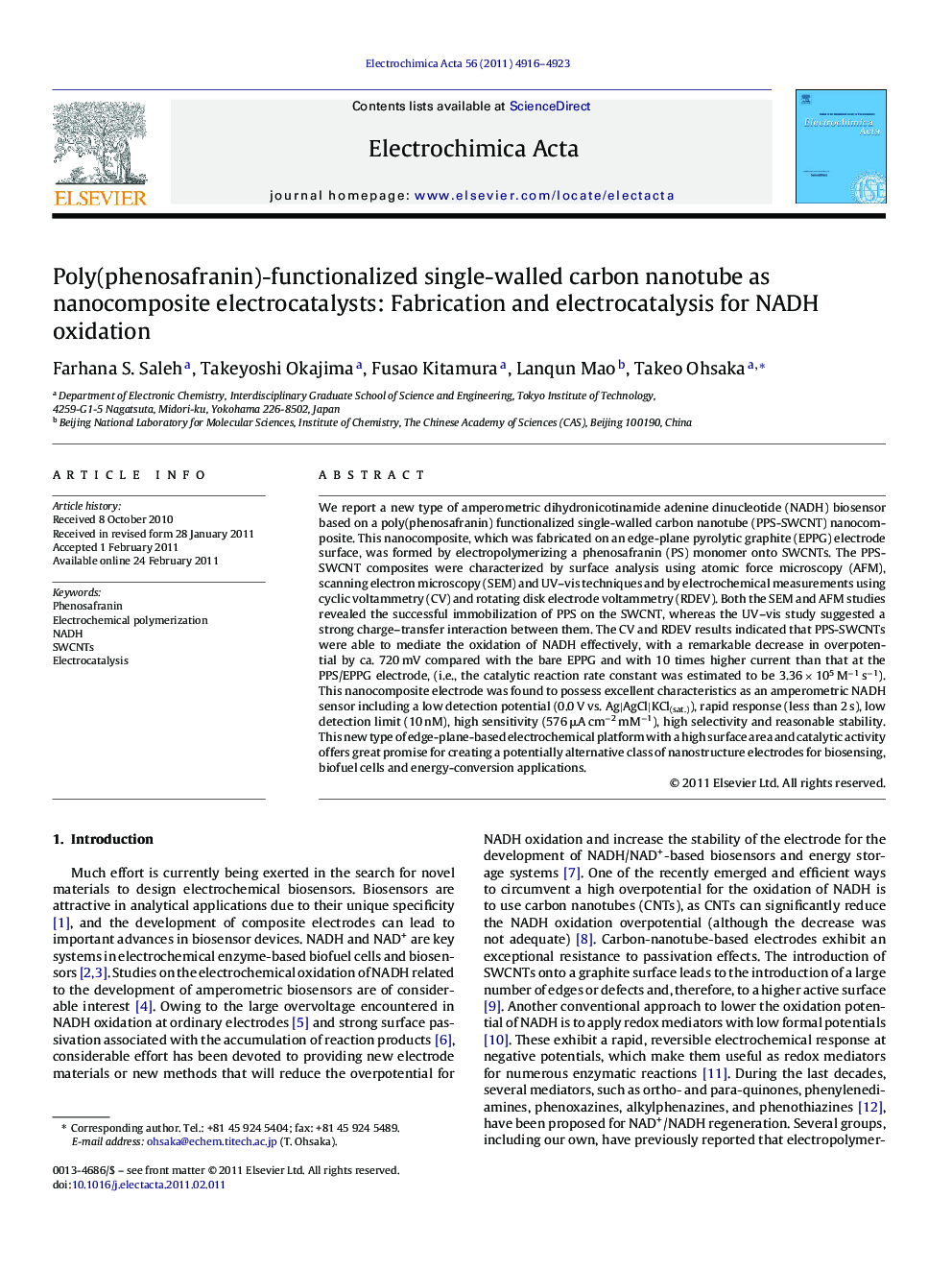| Article ID | Journal | Published Year | Pages | File Type |
|---|---|---|---|---|
| 189973 | Electrochimica Acta | 2011 | 8 Pages |
We report a new type of amperometric dihydronicotinamide adenine dinucleotide (NADH) biosensor based on a poly(phenosafranin) functionalized single-walled carbon nanotube (PPS-SWCNT) nanocomposite. This nanocomposite, which was fabricated on an edge-plane pyrolytic graphite (EPPG) electrode surface, was formed by electropolymerizing a phenosafranin (PS) monomer onto SWCNTs. The PPS-SWCNT composites were characterized by surface analysis using atomic force microscopy (AFM), scanning electron microscopy (SEM) and UV–vis techniques and by electrochemical measurements using cyclic voltammetry (CV) and rotating disk electrode voltammetry (RDEV). Both the SEM and AFM studies revealed the successful immobilization of PPS on the SWCNT, whereas the UV–vis study suggested a strong charge–transfer interaction between them. The CV and RDEV results indicated that PPS-SWCNTs were able to mediate the oxidation of NADH effectively, with a remarkable decrease in overpotential by ca. 720 mV compared with the bare EPPG and with 10 times higher current than that at the PPS/EPPG electrode, (i.e., the catalytic reaction rate constant was estimated to be 3.36 × 105 M−1 s−1). This nanocomposite electrode was found to possess excellent characteristics as an amperometric NADH sensor including a low detection potential (0.0 V vs. Ag|AgCl|KCl(sat.)), rapid response (less than 2 s), low detection limit (10 nM), high sensitivity (576 μA cm−2 mM−1), high selectivity and reasonable stability. This new type of edge-plane-based electrochemical platform with a high surface area and catalytic activity offers great promise for creating a potentially alternative class of nanostructure electrodes for biosensing, biofuel cells and energy-conversion applications.
► Poly(phenosafranin) functionalized single-walled carbon nanotube as nanocomposites. ► Nanocomposite-modified edge-plane pyrolytic graphite electrode for NADH sensing. ► The low detection potential of the present electrode enables to eliminate the interferences from easily oxidizable substances coexisting in real samples with a high selectivity for NADH.
